It’s August already and winter is on it's way out.
The first of the spring blooms are only weeks away and the warmer weather will be welcome, especially if your garden, like mine,is beginning to show the signs of a rather wet winter.
Fungus thrive in these cold wet conditions. And there really isn't any chance to deal with it whilst the rain is falling. But with the help of some welcome
sunshine and an organic fungicide a little sooty mould isn't the end of the world.
Rot, on the other hand, can be fatal. So a good preparation is the key component when it comes to safeguarding your precious plants from cold, frost and
the heavy rain periods that can set in over winter. In our garden well-drained soil is essential for plants susceptible to root rot, like camellias
and daphne. And a good anti-rot spray is never far from hand.
And you can get your hands on a good anti-rot spray - RotGuard from Amgrow,
as well as Eco-fungicide from OCP and much more in this weekend's Zap My Pests Pack.
We're giving it away with Platinum Garden Clinic Club membership.

Photo - LDprod / Shutterstock
It’s Time To
Admire
Oh, the elegant, sculptured blooms of magnolias! Surely there’s room for one in the garden!
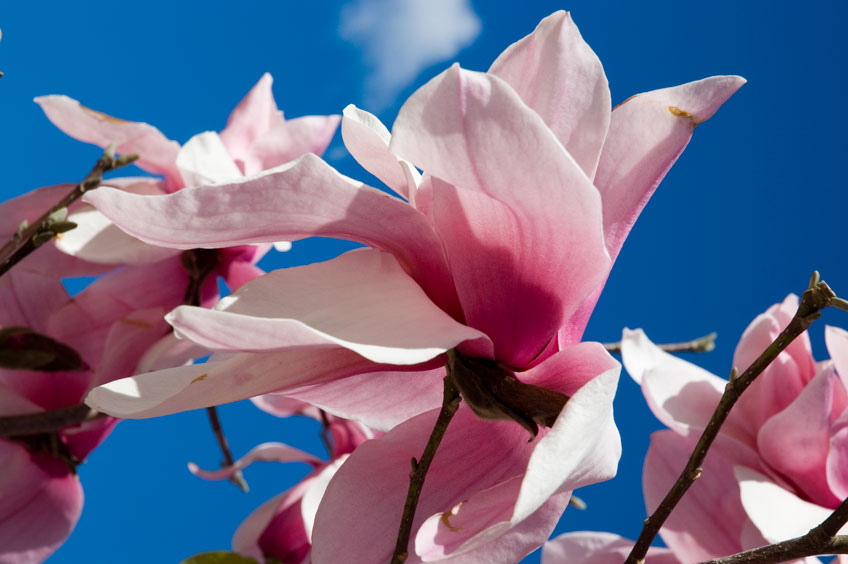
Magnolia 'Star Wars', has massive flowers that are out of this world!
Feed
Spread compost and cow manure mulch on all garden beds and under trees to gently feed plants and encourage worms and beneficial soil microbes.
Boost hungry fruiting plants, especially citrus trees, with a dose of specialised fertiliser to promote new growth and abundant harvests.
Plant
Get the jump on summer tomatoes by sowing seeds into small pots or trays filled with seed-raising mix. Place these on a sunny windowsill indoors and keep
just moist.
Sow seeds of long-lasting summer flowers including petunias, zinnia, portulaca, nasturtium and cosmos, directly into sunny garden beds. Cover with seed-raising
mix and keep moist.
If it's a tree or hedge you're after try a fragrant camellia. Try C. 'High Fragrance', which is a glorious medium to large sized double flower with pale
pink and 'clotted cream' ivory coloured petals with deeper pink edges. It's the sensational perfume that makes this beautiful camellia a winner. C.
'High Fragrance' will prefer shade to flower well and has an open habit ideal for specimen planting or hedging to 2-3m. Flowers from mid June - mid
September. Keep well fed in late summer and autumn with a fertiliser like Kahoona watered in with an organic solution such as Charlie Carp,
Harvest, Nitrosol or Seasol and Powerfeed.
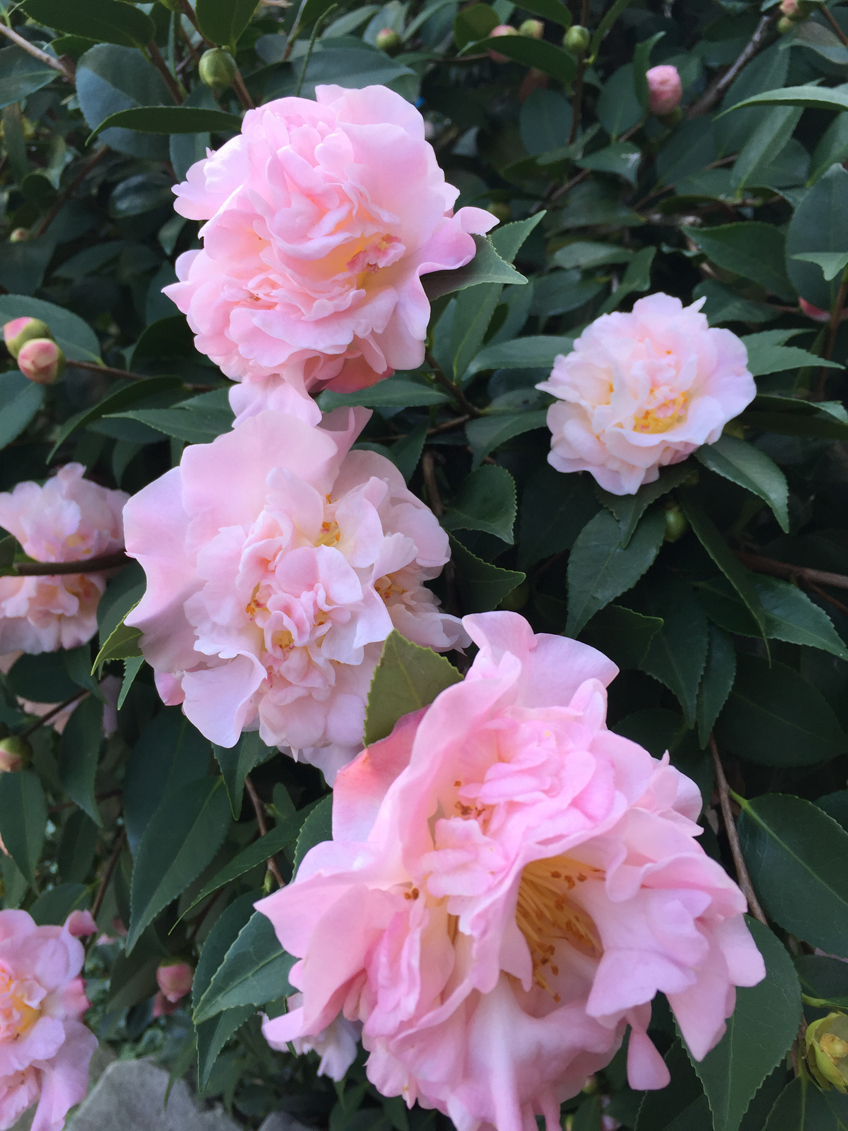
The spectacular medium double flowers of C. 'High Fragrance'. Photo - Graham Ross
Tidy
Ornamental grasses, such as pennisetum, miscanthus and lomandra should be cut back hard. Bunch the tops, tie into a ponytail then shear off close to ground
level using a long knife, saw blade or a chain saw.
Trim hibiscus, plumbago and murraya to shape and apply controlled release fertiliser. They’ll respond quickly as the weather warms.
Repot
As flowers fade, divide and repot cymbidium orchids into fresh orchid bark. Look forward to more lovely blooms next year.
Weed
Treat lawns for bindii using a selective bindii spray, or remove these ferny-leafed weeds by hand before they set flowers and barbed seeds.
Bush garden
Wattle
Fluffy globes of bright yellow flowers give us a not-so-subtle hint that spring’s just around the corner.
The Wattle genus is home to over 1200 species of evergreen trees, shrubs and climbers. Variable foliage, often phyllodes, can be blue-grey to lime-green,
and creates the perfect foil for round heads or spikes of yellow, cream or white flowers from late-winter. They enjoy full sun or part shade. They’re
fast growing and generally short-lived (5-7 years), so they make good ‘nurse’ plants, regenerating well after fire, with the added benefit of being
nitrogen fixers.
Want to know more? Check out the blog, Star of the season: Flowering Wattle.
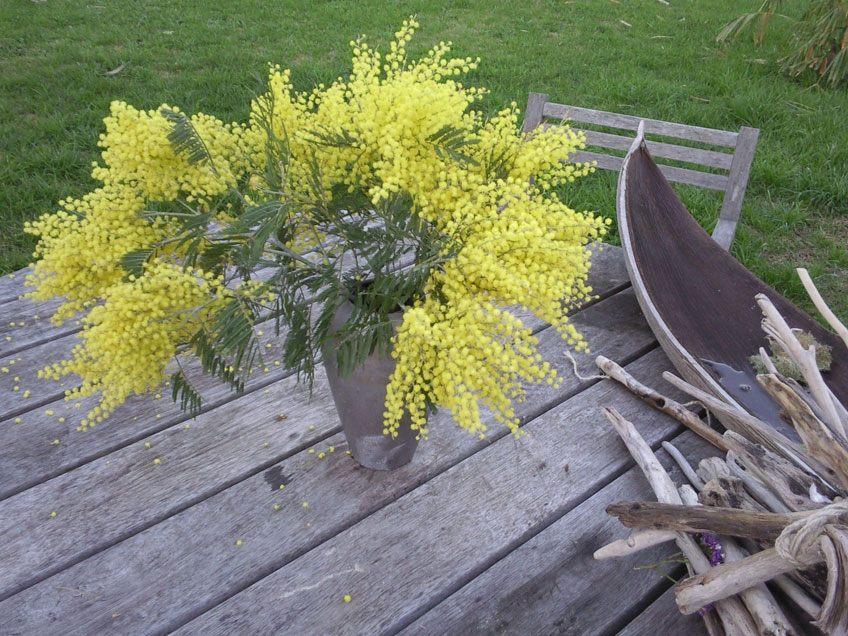
Linda's weeping wattle makes a beautiful floral display. Photo - Linda Ross
Bugwatch
Powdery mildew
Podded Peas suffer powdery mildew as the humidity increases and the weather warms up at the end of the growing season in early spring.
A weekly spray with Eco Fungicide will stop it quickly. Add Eco Oil to increase the sprays efficiency.
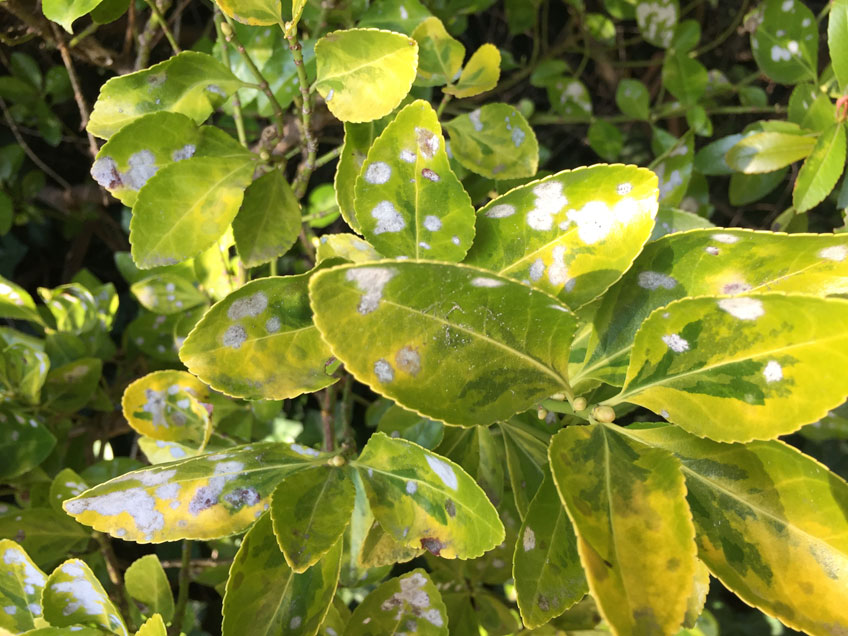
Powdery mildew on peas. Photo - Graham Ross.
Codling Moth in Fruit Trees
Codling moth larvae come from a brown moth that lays it’s eggs on leaves of apples and pears, usually near the fruit. When they hatch the larvae tunnel
into the fruit, feed for 3-5 weeks, and tunnel out the other side. After pupation, adults emerge 12-21 days later and the cycle is repeated.
Nobody likes to find a worm in their apple or pear. Spray with Yates Success ULTRA all over the foliage, including under the leaves, in the cool of the early morning
or late afternoon.
Hanging codling moth traps in the trees can also help break the cycle.
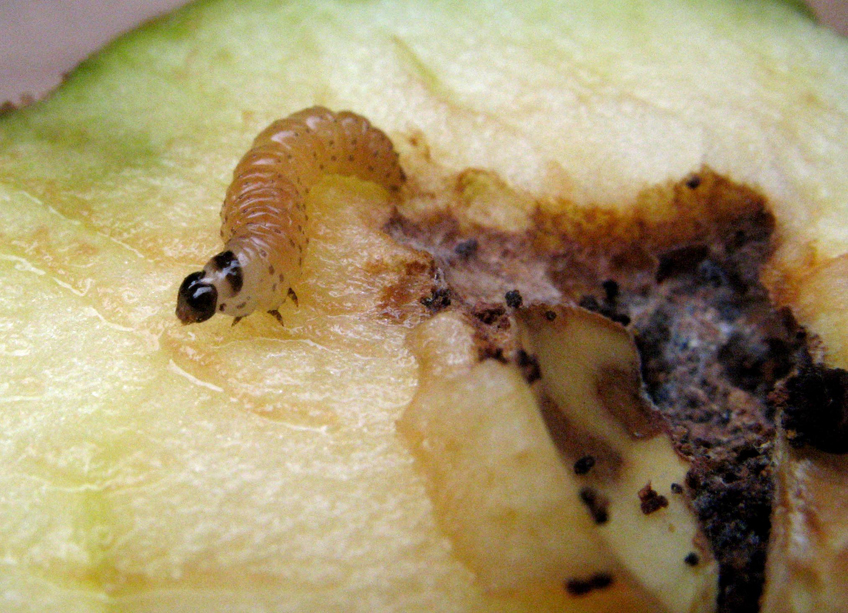
The Germans call them Apfelwickler. We call it not what you want in your apples or pears - the codling moth larvae.
Garden News
Funding available for budding garden designers
Junior Landcare is about encouraging young people
to play an active role in ensuring the safe future of their environment. Yates is one of Australia’s leading garden care brands, a long-term partner
of Landcare Australia, and a key supporter of its Junior Landcare program. Proceeds from the sale of Yates’ Nature’s Way products with the Landcare
Australia logo help fund Junior Landcare projects. Support includes the growing challenges and grants programs that aim to help young people, schools
and youth groups connect with the land and learn how plants grow.
Yates and Junior Landcare are calling on schools, kindergartens and youth groups across the country to submit a design for their dream garden for the chance
to receive a grant valued at $2,000.
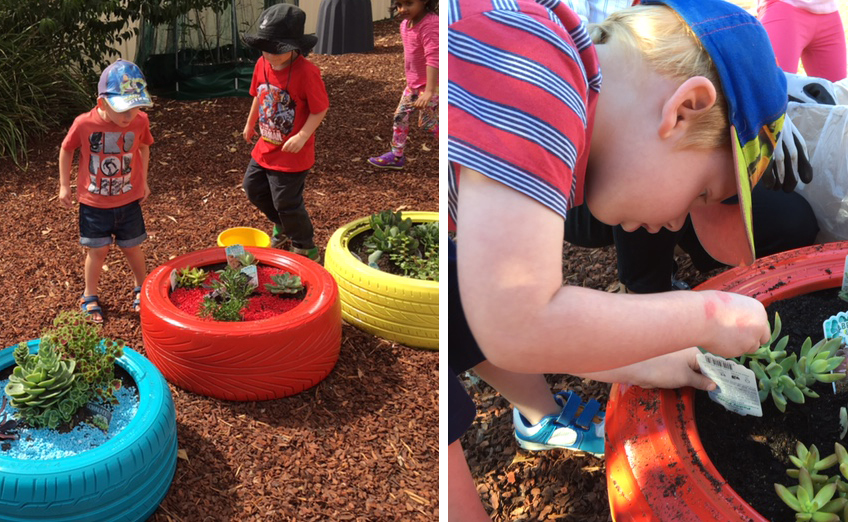
Budding young gardeners sowing succulents at Yates Junior Landcare grant recipient, Blacket Childcare Centre. Photo - Yates.com.au
The ‘Design and Be Inspired in the Garden’ grants program is offering 12 grants made up of $1,500 in funding, $500 of Yates garden products, and a Yates
growing consultation. Grants will be awarded to the most creative, well designed, sustainable, and environmentally conscious entries.
Any budding gardeners interested in submitting an application should visit the Junior Landcare and Yates Garden Greenie websites, where there are resources
and case studies that are sure to inspire. Applications can be made online through the Landcare Australia website and close on August 15th at 9am (AEST).
For more information, guidelines and criteria, or to submit an application, visit www.landcareaustralia.org.au/be-inspired-garden.
Come away with us
Gardens of North India
The opulent palaces, towering forts, beautiful gardens, vibrant colours and incredible bazaars of India have cast their spell on Libby Cameron. She invites
you to join her on the Gardens of North India tour - a wonderfully luxurious adventure to Delhi, Agra, Ranthambore, Udaipur and Jaipur.

the glorious Taj Mahal
For more information on this incredible tour go to the Ross Tours website, or call Royce or Roslyn at Ross Tours to reserve your place on 1300 233 200 for more details on the tour.